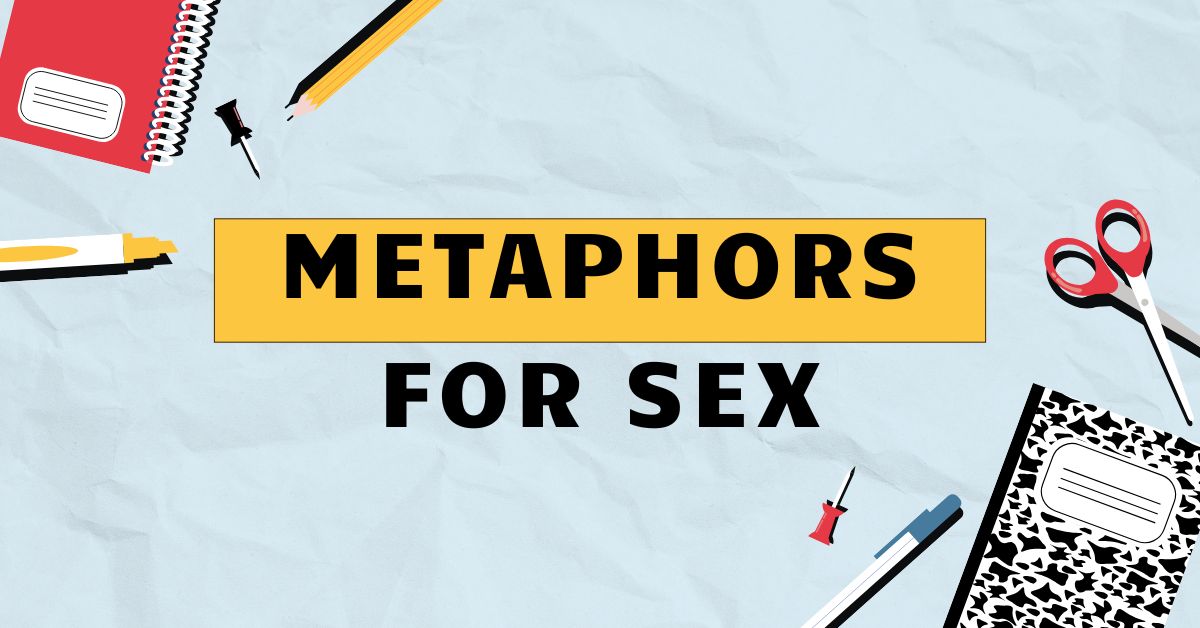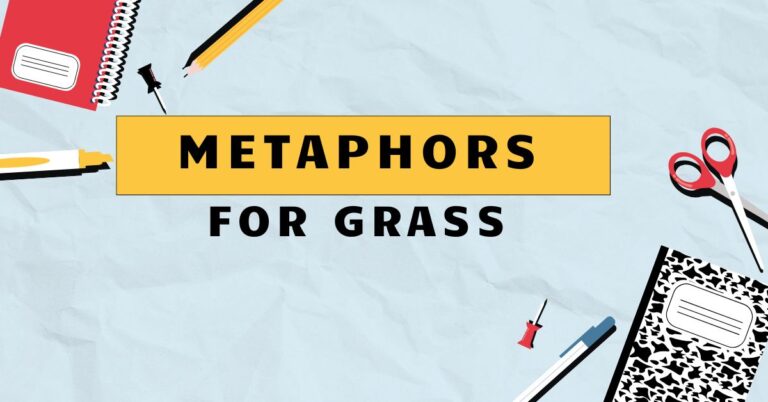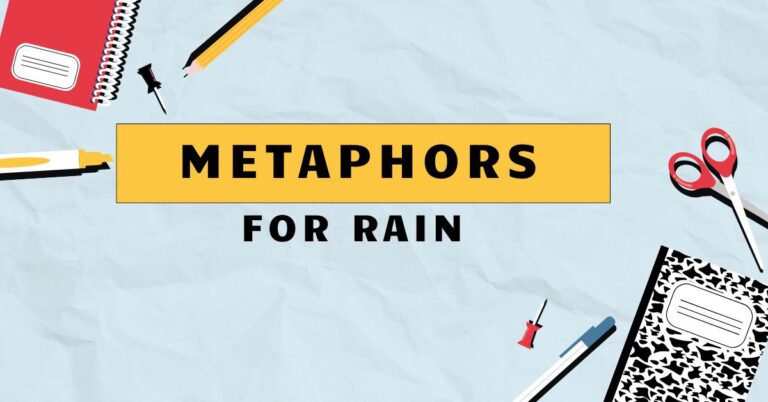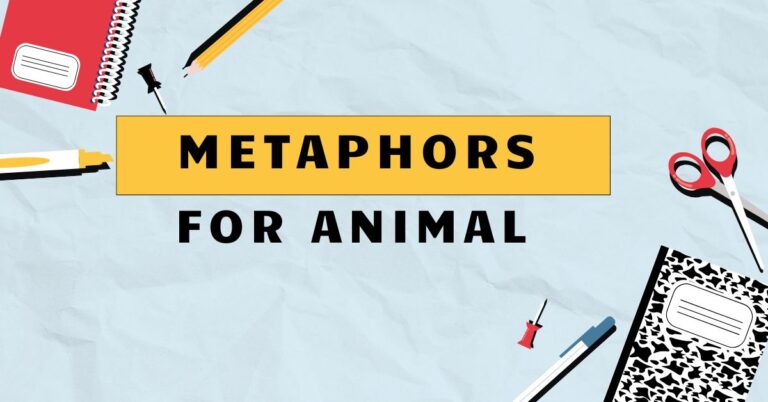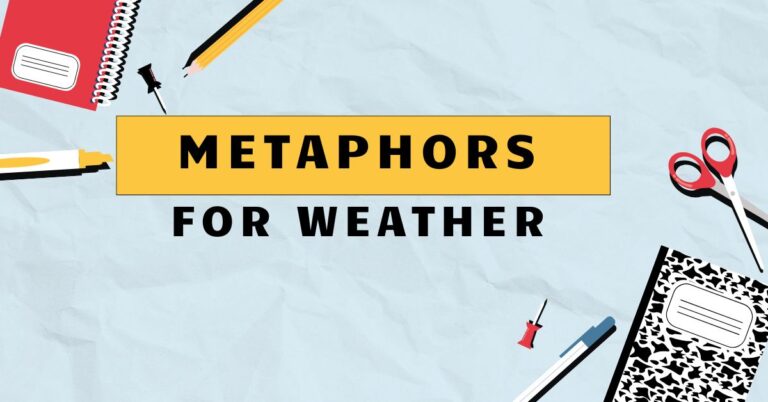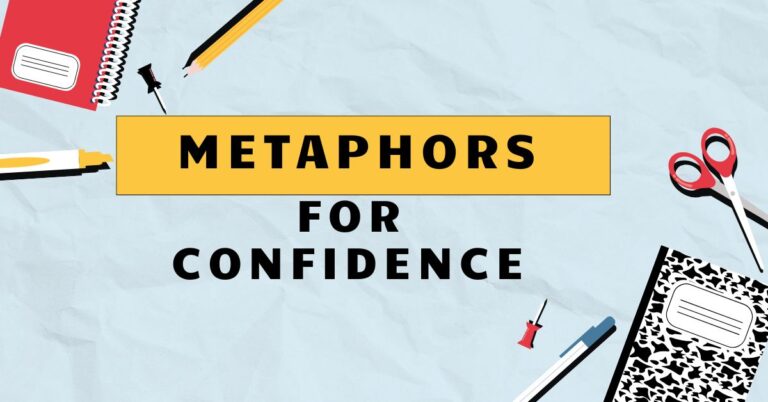45+ Metaphors for Sex: Understanding Figurative Language
Understanding metaphors for sex is vital for interpreting literature, media, and everyday conversations. This knowledge enhances comprehension by decoding implied meanings and cultural contexts.
In English grammar, recognizing these metaphors improves vocabulary, stylistic awareness, and critical thinking. This article benefits students, educators, and anyone seeking a deeper understanding of figurative language and its applications in various forms of communication, fostering both linguistic and cultural literacy.
Table of Contents
- Definition of Metaphors for Sex
- Structural Breakdown
- Types and Categories of Sex Metaphors
- Examples of Metaphors for Sex
- Usage Rules
- Common Mistakes
- Practice Exercises
- Advanced Topics
- FAQ
- Conclusion
Definition of Metaphors for Sex
Metaphors for sex involve using language that describes sexual activity, desire, or anatomy in indirect, figurative ways. These metaphors function by drawing parallels between sex and other concepts, such as sports, food, war, dance, construction, nature, or journeys.
This indirectness allows for a layered understanding, often used to evoke specific emotions, create humor, or soften potentially explicit content. The use of metaphors provides a culturally nuanced way to discuss a sensitive topic.
The primary function of these metaphors is to communicate ideas about sex without being explicit. This can serve several purposes, including avoiding censorship, adding artistic flair, or making the topic more approachable.
The context in which these metaphors are used is crucial, as the same metaphor can have different connotations depending on the situation. For example, a sports metaphor might emphasize competition or physical exertion, while a food metaphor could highlight pleasure and indulgence.
Metaphors for sex are prevalent in literature, music, film, and everyday conversation. They are essential tools for writers and speakers who wish to explore themes of sexuality in creative and engaging ways.
Additionally, understanding these metaphors is crucial for interpreting and analyzing various forms of media, as they often carry significant cultural and social meanings. The use of metaphor allows for exploration of complex themes without explicit language.
Structural Breakdown
The structure of metaphors for sex typically involves two main components: thetenorand thevehicle. Thetenoris the subject being described (in this case, sex), while thevehicleis the concept used to represent it (e.g., a game, a meal, a battle).
The metaphor works by highlighting similarities between the tenor and the vehicle. Understanding this structure helps in deciphering the intended meaning of the metaphor.
The connection between the tenor and vehicle is not always straightforward. It often relies on shared cultural understandings and associations.
For instance, using “scoring” as a metaphor for sex relies on the common association of sports with achievement and conquest. The effectiveness of the metaphor depends on the audience’s ability to recognize this connection.
In some cases, metaphors for sex can be extended, meaning that the initial metaphor is developed further with additional related imagery. This can create a richer and more complex representation of the subject.
For example, a journey metaphor might be extended to include landmarks, obstacles, and destinations, each representing different aspects of sexual experience. Extended metaphors add depth to the original comparison.
Types and Categories of Sex Metaphors
Metaphors for sex can be categorized based on the type of concept used as the vehicle. Common categories include sports metaphors, food metaphors, war metaphors, dance metaphors, construction metaphors, animal metaphors, journey metaphors, and nature metaphors.
Each category brings its own set of associations and connotations to the representation of sex.
Sports Metaphors
Sports metaphors often emphasize competition, physical exertion, and achievement. They can portray sex as a game with winners and losers, or as a physical challenge to be overcome.
These metaphors can be used to highlight the competitive or playful aspects of sexual encounters. The use of sports metaphors can also imply a sense of strategy and skill.
Food Metaphors
Food metaphors focus on pleasure, indulgence, and satisfaction. They can describe sex as a delicious meal to be savored, or as a sweet treat to be enjoyed.
These metaphors often evoke sensual imagery and emphasize the sensory experience of sex. Food metaphors can also suggest a sense of nourishment or fulfillment.
War Metaphors
War metaphors portray sex as a battle, with elements of conquest, aggression, and vulnerability. They can highlight the power dynamics and potential conflicts involved in sexual relationships.
These metaphors can be used to explore themes of dominance, submission, and resistance. War metaphors often carry negative connotations, suggesting potential harm or exploitation.
Dance Metaphors
Dance metaphors emphasize rhythm, coordination, and harmony. They can describe sex as a graceful and synchronized movement between partners.
These metaphors often evoke a sense of intimacy and connection. Dance metaphors suggest a balance and reciprocity within the sexual experience.
Construction Metaphors
Construction metaphors focus on building, creating, and assembling. They can describe sex as a process of constructing intimacy and connection.
These metaphors may highlight the effort and collaboration involved in building a relationship. Construction metaphors can also suggest a sense of stability and permanence.
Animal Metaphors
Animal metaphors draw on the primal and instinctual aspects of sex. They can portray sex as a raw and untamed experience, driven by basic desires.
These metaphors often evoke images of nature and the animal kingdom. Animal metaphors can suggest a lack of control or restraint.
Journey Metaphors
Journey metaphors describe sex as an exploration, a path, or a voyage. They can highlight the sense of discovery and adventure involved in sexual experiences.
These metaphors often evoke images of travel and exploration. Journey metaphors can also suggest a sense of progress and transformation.
Nature Metaphors
Nature metaphors use elements of the natural world to describe sex. They might compare sexual experiences to the changing seasons, the flow of a river, or the blooming of a flower.
These metaphors often evoke a sense of beauty, growth, and renewal. Nature metaphors can also suggest a connection to the earth and the cycles of life.
Examples of Metaphors for Sex
The following tables provide examples of metaphors for sex, categorized by type. Each example illustrates how the vehicle (e.g., a sport, a food) is used to represent the tenor (sex).
These examples demonstrate the variety and creativity of figurative language used to discuss this topic.
Below is a table showcasing some examples of sports metaphors used for sex. These examples often carry connotations of competition, achievement, or physical prowess.
| Category | Metaphor | Explanation |
|---|---|---|
| Sports | “She scored a home run last night.” | Implies successful sexual encounter. |
| Sports | “He’s always chasing after the ball.” | Describes someone actively seeking sexual partners. |
| Sports | “They went all the way to the end zone.” | Refers to engaging in sexual intercourse. |
| Sports | “She’s a real player.” | Indicates someone who is sexually active and experienced. |
| Sports | “He struck out with her.” | Means he was rejected sexually. |
| Sports | “It was a slam dunk.” | Describes an easy and successful sexual encounter. |
| Sports | “She’s always batting her eyelashes.” | Suggests flirtatious behavior. |
| Sports | “He’s trying to get to first base.” | Refers to attempting to initiate physical intimacy. |
| Sports | “She gave him the red card.” | Indicates that she ended the sexual encounter or relationship. |
| Sports | “He’s got game.” | Means he is skilled at attracting sexual partners. |
| Sports | “She’s always on the offensive.” | Describes someone who is sexually aggressive. |
| Sports | “He’s playing the field.” | Indicates that he is dating multiple people. |
| Sports | “She’s a good sport.” | Suggests someone who is open to sexual experimentation. |
| Sports | “He’s always benching her.” | Means he is ignoring or neglecting her sexually. |
| Sports | “She’s got a killer serve.” | Suggests she is very attractive and sexually desirable. |
| Sports | “He’s a real team player.” | Implies he is cooperative and considerate in sexual relationships. |
| Sports | “She’s always raising the bar.” | Means she has high standards for sexual partners. |
| Sports | “He’s trying to score points with her.” | Refers to attempting to impress her sexually. |
| Sports | “She’s always running laps around him.” | Suggests she is more sexually experienced or dominant. |
| Sports | “He’s a champion in the bedroom.” | Means he is skilled and successful in sexual encounters. |
| Sports | “She always wins the race.” | Suggests she is highly desirable and successful in attracting partners. |
| Sports | “He’s dodging her advances.” | Means he is avoiding her sexual advances. |
| Sports | “She’s tackling his heart.” | Implies she is aggressively pursuing a romantic relationship. |
| Sports | “He’s in her penalty box.” | Suggests he is in trouble with her sexually. |
| Sports | “She’s got a tight defense.” | Means she is not easily seduced. |
| Sports | “He’s always on the sidelines.” | Suggests he is hesitant or afraid to engage sexually. |
| Sports | “She’s playing hard to get.” | Means she is making it difficult for him to seduce her. |
| Sports | “He’s a free agent.” | Indicates he is not in a committed relationship and is open to sexual encounters. |
| Sports | “She’s setting the pace.” | Suggests she is in control of the sexual encounter. |
The following table illustrates various food metaphors for sex. These metaphors highlight the sensual and pleasurable aspects of sexual experiences.
| Category | Metaphor | Explanation |
|---|---|---|
| Food | “She’s a real dish.” | Describes someone who is very attractive. |
| Food | “He wants a piece of that cake.” | Means he is sexually attracted to her. |
| Food | “It was a sweet treat.” | Refers to a pleasurable sexual experience. |
| Food | “She’s got a lot of sugar.” | Indicates someone who is sweet and desirable. |
| Food | “He’s hungry for her.” | Means he is sexually attracted to her. |
| Food | “She’s the main course.” | Suggests she is the primary object of desire. |
| Food | “He’s got a taste for her.” | Means he is sexually interested in her. |
| Food | “She’s a hot tamale.” | Describes someone who is very attractive and passionate. |
| Food | “He wants to butter her up.” | Refers to trying to charm her to get sexual favors. |
| Food | “She’s a real snack.” | Describes someone who is attractive and easy to approach. |
| Food | “He’s always craving her.” | Means he has a strong sexual desire for her. |
| Food | “She’s a juicy peach.” | Describes someone who is attractive and desirable. |
| Food | “He wants to devour her.” | Means he has a strong sexual desire for her. |
| Food | “She’s got a lot of flavor.” | Indicates someone who is exciting and interesting. |
| Food | “He’s always nibbling at her.” | Refers to making small sexual advances. |
| Food | “She’s a real delicacy.” | Describes someone who is rare and desirable. |
| Food | “He wants to feast on her.” | Means he has a strong sexual desire for her. |
| Food | “She’s a sweet pie.” | Describes someone who is kind and attractive. |
| Food | “He’s always licking his chops.” | Refers to anticipating a sexual encounter. |
| Food | “She’s a real treat.” | Describes someone who is delightful and desirable. |
| Food | “He wants to have his cake and eat it too.” | Means he wants to enjoy sexual pleasure without commitment. |
| Food | “She’s the icing on the cake.” | Indicates someone who makes life more enjoyable. |
| Food | “He’s always stirring the pot.” | Refers to creating sexual tension or drama. |
| Food | “She’s a tough nut to crack.” | Means she is difficult to seduce. |
| Food | “He’s got a sweet tooth for her.” | Means he has a strong attraction to her. |
| Food | “She’s a real bombshell.” | Describes someone who is stunning and sexually attractive. |
| Food | “He’s always fishing for compliments.” | Refers to seeking validation for his attractiveness. |
| Food | “She’s a real peach.” | Describes someone who is lovely and kind. |
| Food | “He’s got a taste of the forbidden fruit.” | Means he has experienced something exciting and risky. |
The following table presents examples of war metaphors used for sex. These metaphors often emphasize power dynamics, conquest, or conflict.
| Category | Metaphor | Explanation |
|---|---|---|
| War | “She conquered his heart.” | Implies she won his affection. |
| War | “He’s always on the attack.” | Describes someone who is sexually aggressive. |
| War | “She laid siege to his defenses.” | Means she persistently pursued him sexually. |
| War | “He surrendered to her charms.” | Implies he was easily seduced by her. |
| War | “She’s a weapon of mass seduction.” | Describes someone who is extremely attractive and seductive. |
| War | “He’s always fighting for her attention.” | Means he is competing with others for her affection. |
| War | “She’s a warrior in the bedroom.” | Describes someone who is assertive and skilled in sexual encounters. |
| War | “He’s always plotting his next move.” | Refers to planning a sexual encounter. |
| War | “She’s got a strong defense.” | Means she is not easily seduced. |
| War | “He’s always taking prisoners.” | Refers to seducing and controlling others. |
| War | “She’s a strategic mastermind.” | Describes someone who is skilled at manipulating others sexually. |
| War | “He’s always building his army.” | Refers to gathering potential sexual partners. |
| War | “She’s a force to be reckoned with.” | Describes someone who is powerful and influential. |
| War | “He’s always retreating from her advances.” | Means he is avoiding her sexual advances. |
| War | “She’s a master of disguise.” | Describes someone who can easily change their appearance to attract others. |
| War | “He’s always digging trenches.” | Refers to preparing for a long and difficult relationship. |
| War | “She’s a hidden weapon.” | Describes someone who is surprisingly seductive. |
| War | “He’s always bombing her with compliments.” | Refers to showering her with flattery. |
| War | “She’s a queen on her throne.” | Describes someone who is powerful and in control. |
| War | “He’s always patrolling her territory.” | Refers to keeping an eye on her and her potential suitors. |
| War | “She’s a fortress of solitude.” | Describes someone who is emotionally guarded. |
| War | “He’s always storming her gates.” | Refers to aggressively pursuing her affections. |
| War | “She’s a silent assassin.” | Describes someone who is subtly seductive. |
| War | “He’s always laying down his arms.” | Refers to surrendering to her charms. |
| War | “She’s a general in command.” | Describes someone who is in control of the relationship. |
| War | “He’s always scouting for new targets.” | Refers to looking for new sexual partners. |
| War | “She’s a master strategist.” | Describes someone who is skilled at planning and executing sexual encounters. |
| War | “He’s always planting mines.” | Refers to creating obstacles for others. |
| War | “She’s a nuclear weapon.” | Describes someone who is extremely powerful and dangerous. |
These examples provide a glimpse into the diverse ways metaphors can be used to talk about sex. Understanding these metaphors can improve comprehension and appreciation of literature, media, and everyday conversations.
Usage Rules
The use of metaphors for sex is governed by several rules, primarily related to context and audience. It is essential to consider the appropriateness of the metaphor in a given situation.
What might be acceptable in a private conversation could be inappropriate in a formal setting. Cultural norms and sensitivities also play a significant role in determining the acceptability of these metaphors.
When using metaphors for sex, it is important to be mindful of potential misinterpretations. The intended meaning should be clear from the context, and the metaphor should not be overly ambiguous or offensive.
Consider the audience’s background and understanding when choosing a metaphor. A metaphor that is familiar to one group may be confusing or offensive to another.
Furthermore, avoid using metaphors that perpetuate harmful stereotypes or objectify individuals. Metaphors should be used responsibly and ethically, with respect for the dignity and autonomy of all people.
It is crucial to promote healthy and respectful communication about sex and sexuality.
Common Mistakes
One common mistake is using metaphors that are too explicit or graphic, defeating the purpose of using a metaphor in the first place. The goal is to suggest rather than state directly.
Another mistake is using metaphors that are culturally insensitive or offensive. Always consider the potential impact of your language on others.
Another frequent error is using mixed metaphors, where the tenor is described using two or more vehicles that do not logically fit together. This can create confusion and undermine the effectiveness of the metaphor.
For example, “She scored a home run while navigating treacherous waters” mixes a sports metaphor with a journey metaphor in a way that doesn’t quite work.
The table below showcases common mistakes when using metaphors for sex, providing examples of both incorrect and correct usages.
| Category | Incorrect | Correct | Explanation |
|---|---|---|---|
| Explicit | “She banged him like a drum.” | “They danced the night away.” | The incorrect example is too direct; the correct example is subtle. |
| Insensitive | “She’s a piece of meat.” | “She’s a real dish.” | The incorrect example is objectifying; the correct example is complimentary. |
| Mixed Metaphor | “He scored a touchdown in her heart’s garden.” | “He scored a touchdown with her.” | The incorrect example mixes sports and nature; the correct example is consistent. |
| Ambiguous | “They went to the place.” | “They went on a wild ride.” | The incorrect example is vague; the correct example is evocative. |
| Overused | “She’s hot.” | “She’s a firecracker.” | The incorrect example is cliché; the correct example is more creative. |
Practice Exercises
These practice exercises will help you identify and understand metaphors for sex. Read each sentence and identify the metaphor used, explaining its meaning in the context of sex or sexuality.
Exercise 1: Identifying Metaphors
| Question | Answer |
|---|---|
| 1. “He’s been fishing for a date all week.” | Metaphor: Fishing. Meaning: He’s been trying to find someone to go on a date with. |
| 2. “She’s playing hard to get, but I’ll win her over.” | Metaphor: Playing a game. Meaning: She is making it difficult for him to seduce her, but he is determined to succeed. |
| 3. “Their relationship is a rollercoaster of passion.” | Metaphor: Rollercoaster. Meaning: Their relationship is full of intense emotions and unpredictable ups and downs. |
| 4. “He’s always chasing skirts.” | Metaphor: Chasing. Meaning: He is always pursuing women for sexual encounters. |
| 5. “She’s a real firecracker in the bedroom.” | Metaphor: Firecracker. Meaning: She is exciting and energetic during sex. |
| 6. “He wants to unlock the secrets of her heart.” | Metaphor: Unlocking. Meaning: He wants to understand her true feelings and desires. |
| 7. “Their love is a battlefield.” | Metaphor: Battlefield. Meaning: Their relationship is full of conflict and struggle. |
| 8. “She’s a siren, luring men to their doom.” | Metaphor: Siren. Meaning: She is dangerously attractive and manipulative. |
| 9. “He’s trying to climb her mountain.” | Metaphor: Climbing a mountain. Meaning: He is trying to overcome obstacles to achieve a sexual encounter with her. |
| 10. “Their passion is a burning flame.” | Metaphor: Burning flame. Meaning: Their sexual desire is intense and consuming. |
Exercise 2: Creating Metaphors
Create your own metaphor for sex using the following categories:
| Category | Your Metaphor | Explanation |
|---|---|---|
| Dance | “Their bodies moved in perfect harmony, a tango of unspoken desires.” | Meaning: Their sexual encounter was a synchronized and passionate dance. |
| Nature | “Their love bloomed like a rare orchid, delicate yet vibrant.” | Meaning: Their sexual relationship is beautiful and unique. |
| Journey | “They embarked on a voyage of discovery, exploring each other’s hidden shores.” | Meaning: Their sexual encounter was an adventure of exploration and intimacy. |
| Food | “She was a forbidden fruit, tempting him with her sweetness.” | Meaning: She was attractive and desirable, but potentially dangerous or off-limits. |
| War | “He breached her walls, claiming victory over her heart.” | Meaning: He overcame her emotional defenses and won her love. |
| Sports | “She set the pace, leading him on a marathon of pleasure.” | Meaning: She was in control and dominant during the sexual encounter. |
| Construction | “They built a bridge of intimacy, brick by brick.” | Meaning: They gradually created a strong and lasting emotional connection. |
| Animal | “Their passion roared like a lion, untamed and primal.” | Meaning: Their sexual desire was intense and instinctual. |
| Music | “Each touch was a note, composing a symphony of desire.” | Meaning: Their intimate interactions created a harmonious and beautiful experience. |
| Technology | “Their connection was electric, a surge of energy that ignited their souls.” | Meaning: Their attraction was powerful and immediate. |
Advanced Topics
At an advanced level, the study of metaphors for sex involves exploring their cultural and historical contexts. Different cultures and time periods have used different metaphors to describe sex, reflecting varying social attitudes and beliefs.
Analyzing these metaphors can provide insights into the cultural values and norms of a particular society.
Another advanced topic is the use of metaphors for sex in literature and art. Authors and artists often use metaphors to explore complex themes of sexuality, desire, and power.
Examining these works can reveal the subtle and nuanced ways in which metaphors shape our understanding of these themes.
The deconstruction of metaphors for sex is also an advanced area of study. This involves analyzing the underlying assumptions and biases embedded in these metaphors.
By deconstructing metaphors, we can challenge traditional views of sex and sexuality and promote more inclusive and equitable representations.
FAQ
- What is the difference between a metaphor and a simile?
A metaphor directly equates two unlike things, while a simile uses “like” or “as” to make a comparison. For example, “He is a lion in bed” (metaphor) versus “He is like a lion in bed” (simile).
- Why are metaphors used for sex instead of direct language?
Metaphors allow for indirect communication, avoiding explicit or potentially offensive language. They can also add artistic flair and evoke specific emotions or cultural associations.
- How does cultural context affect the interpretation of sex metaphors?
Cultural context significantly shapes the meaning of metaphors. A metaphor that is acceptable in one culture may be offensive or misunderstood in another. Understanding these nuances is crucial for effective communication.
- What are some common categories of metaphors used for sex?
Common categories include sports, food, war, dance, construction, animal, journey, and nature metaphors. Each category brings its own set of associations to the representation of sex.
- How can I avoid using offensive metaphors for sex?
Be mindful of potential misinterpretations and cultural sensitivities. Avoid metaphors that perpetuate harmful stereotypes or objectify individuals. Use language responsibly and ethically.
- What is a mixed metaphor, and why should I avoid it?
A mixed metaphor combines two or more unrelated metaphors, creating confusion and undermining the effectiveness of the language. For example, “He scored a touchdown while navigating treacherous waters.”
- How can I improve my understanding of sex metaphors in literature and media?
Pay attention to the context in which the metaphors are used and consider the author’s or artist’s intentions. Research the cultural and historical background of the work to gain a deeper understanding of the metaphors’ meanings.
- What role do metaphors play in shaping our understanding of sexuality?
Metaphors can influence our perceptions of sex by framing it in certain ways. For example, war metaphors may emphasize power dynamics, while dance metaphors may highlight harmony and connection. Being aware of these influences can help us challenge traditional views and promote more equitable representations.
- How do extended metaphors enhance the description of sex?
Extended metaphors create a richer and more complex representation of sex by developing the initial comparison further with related imagery. This can add depth and nuance to the overall message.
- Can metaphors for sex be used in academic writing?
While creative writing thrives on metaphors, academic writing typically avoids them in favor of precise, literal language. If used, metaphors should be carefully selected and clearly explained to avoid ambiguity.
- What are some examples of animal metaphors for sex?
Examples include “She’s a vixen,” “He’s a stud,” or describing a sexual encounter as “animalistic.” These metaphors often emphasize primal instincts and raw desire.
- How can understanding metaphors for sex improve communication in relationships?
Understanding these metaphors can help partners better understand and express their desires and feelings. It can also facilitate more open and honest conversations about sex and intimacy.
Conclusion
Understanding metaphors for sex is crucial for interpreting various forms of communication and appreciating the nuances of language. By recognizing the different types of metaphors and their underlying meanings, we can gain a deeper understanding of how sex and sexuality are represented in culture and society.
This knowledge enhances our ability to analyze and critique media, literature, and everyday conversations.
Furthermore, being mindful of the potential impact of these metaphors can help us communicate more responsibly and ethically. By avoiding offensive or harmful language, we can promote healthy and respectful discussions about sex and sexuality.
Continue to explore and analyze the metaphors you encounter in your daily life, and consider how they shape your own understanding of this complex and important topic. Practice identifying and deconstructing metaphors to enhance your critical thinking skills.
Finally, remember that language is constantly evolving, and new metaphors for sex are likely to emerge over time. Stay curious and open-minded, and continue to expand your vocabulary and understanding of figurative
language.

